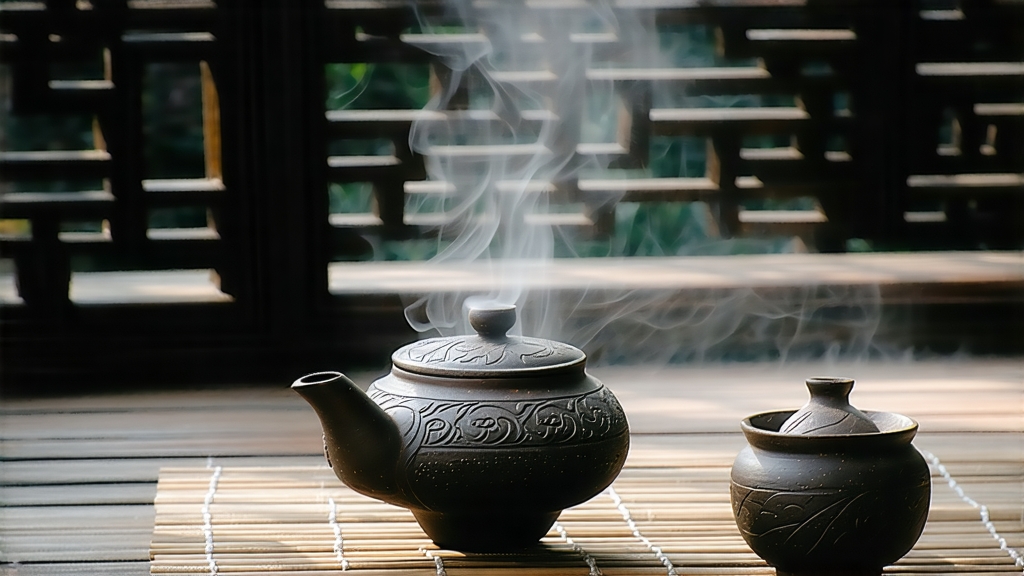
Tucked away in the southern folds of China’s Guangxi Zhuang Autonomous Region, Liu Bao tea has spent four centuries perfecting the art of subtlety. To the uninitiated it is merely another dark leaf in the vast family of Chinese fermented teas, yet to the seasoned palate it is a liquid archive of mountain mist, river mist, and the quiet patience of farmers who still speak the dialect of the Ming dynasty. While Pu-erh has conquered export statistics and glossy magazines, Liu Bao remains the insider’s secret, traded in bamboo baskets, aged in karst caves, and sipped in dim teahouses where the clock is always set to “later”.
Historical whispers place Liu Bao on the ancient Tea-Horse Road, not as the flamboyant caravan leader but as the quiet muleteer who kept the horses calm. Compressed into tight baskets, the tea left the small county of Wuzhou, followed the Liu River, and descended into the Pearl River delta where merchants loaded it onto junks bound for Hong Kong, Malaya, and the tin mines of Kuala Lumpur. There, coolies brewed it in dented kettles, believing the dark liquor chased away malaria and homesickness. By the late Qing, Liu Bao had become a currency of empathy, sent home in letters soaked with its earthy aroma, proof that a brother was still alive and still remembering.
Technically, Liu Bao is a post-fermented tea, cousin to Pu-erh yet fiercely individual. The cultivar is a large-leaf Camellia sinensis var. assamica that has acclimatised to the red lateritic soils of the Yao and Zhuang villages. Picking begins in late April when three leaves and a bud still wear the dawn’s dew. The first transformation is a gentle withering on split-bamboo trays set under shaded trellises; the leaf loses its grassy edge and acquires the flaccidity needed for bruising. Rolling follows, but unlike the tight twists demanded by green tea, Liu Bao leaves are loosely kneaded until they resemble tiny green dragons dozing on the farmer’s palm.
The signature act, however, is “wet-piling” or wo dui, a Guangxi invention that predates Pu-erh’s analogous process by at least a century. The leaves are piled 70 cm high inside a cement trough lined with banana leaves, sprayed with mineral-rich spring water, and covered with jute sacks. Every forty-eight hours the pile is turned by barefoot men who test the temperature with the backs of their hands; 55 °C is the magic number where microbes dance without turning the tea sour. After twenty days the leaf has darkened to rusted iron, and a scent reminiscent of betel nut and rain-soaked camphor rises from the heap. Yet the tea is still adolescent; it needs bamboo.
Post-fermentation, the tea is steamed for seven seconds, just long enough to awaken surface enzymes, then stuffed into cylindrical bamboo baskets woven from three-year-old mao zhu. The baskets breathe, allowing a slow micro-oxidation that will continue for decades. Traditional cellars are caves in the karst hills where relative humidity hovers at 85 % and temperature stays a steady 22 °C; here Liu Bao sleeps, dreaming of the river that gave it its name. Each year the master lifts the lid, sniffs, and if the tea whispers back “not yet,” the basket is returned to the darkness. When the dialogue finally turns to “I am ready,” the leaf has shed all green bitterness and acquired a patina of jujube, nutmeg, and the faintest echo of tobacco smoked in an old clay pipe.
Modern commerce has added two shortcuts: the “white-basket” version aged only three years, aimed at the domestic office market, and the “heavy-fermented” style where the wo dui is extended to forty days, producing a pitch-black leaf and a liquor that stains porcelain like ink. Purists dismiss both, insisting that fifteen years is the minimum age for authentic character, and that true Liu Bao should never taste of compost but of forest floor after the first autumn rain.
To brew Liu Bao is to negotiate with time. Begin with a porcelain gaiwan for honesty, or a Yixing clay teapot if you wish to flatter the tea. The leaf is chunky; a heaping tablespoon (7 g) suffices for 150 ml of water. Rinse once, swiftly, to wake the leaf and to rinse away the dust of its long slumber